| HOME | AWARDS | ARCHIVE | FILM VFX | CONTACT |
|---|

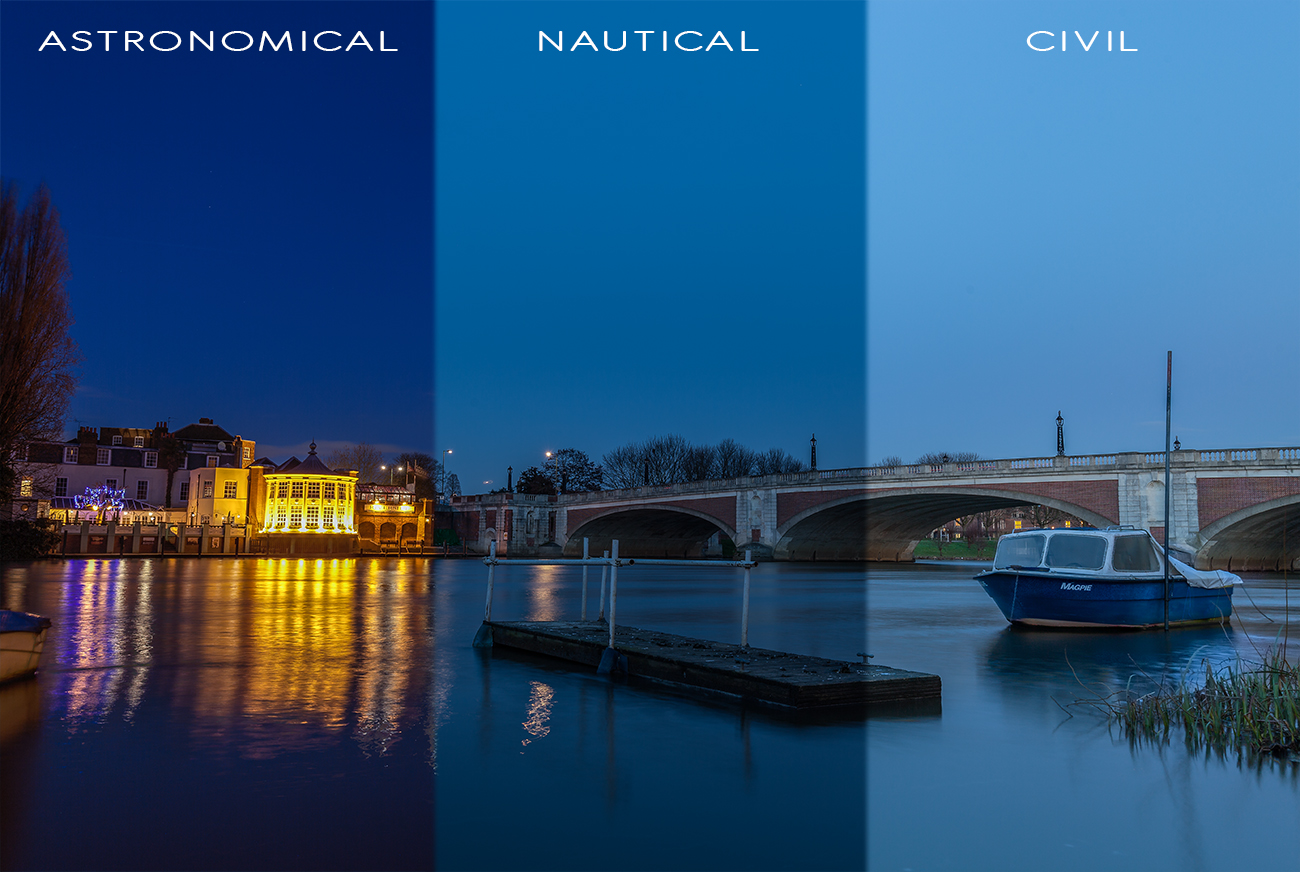 |
|
|---|---|
Twilight Phases at Hampton Court Bridge Twilight, also known as blue hour is one of my favourite times of the day. It can occur before sunrise and after sunset, for this we will be concentrating on after sunset. I see a lot of photographers and people in general spend time during 'golden hour', watching the sun set as the colours turn from yellow to orange and if your lucky... an amazing pinky purple red! Then they move on as if the show is over. I won't be going into the specifics of how the blue hour is produced, lets just say at a certain degree below the horizon causes light to change... Wiki blue hour for more in-depth info. |
|
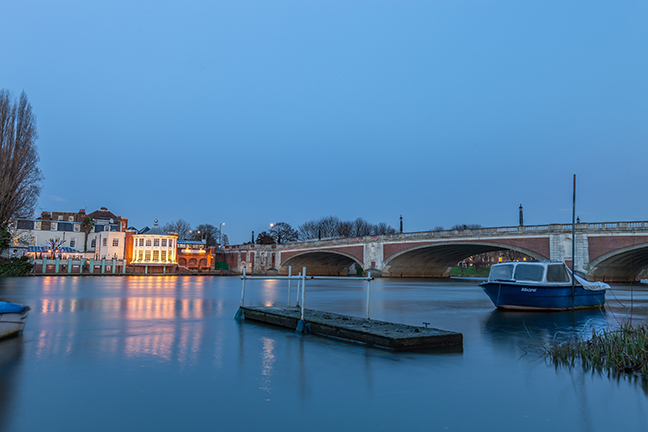 |
Civil Twilight This shot was taken 15 minutes after sunset, you can see that even at f/9 the exposure time is 3 seconds so first thing is a tripod. Always turn off image-stabilization on your lens when using a tripod as it can have un-welcomed results! I also wouldn't consider taken photos like this at more then ISO 100, you can only imagine that the ISO would need to be increased to about 3200 to get a quick exposure time and this will result in way to much noise. Lowering the aperture would help but again with this kind of shot we need sharpness across the field. Civil twilight is the period 10 minutes after sunset and lasts for only another 10 minutes, during this time the skies are a bright blue or aqua causing a view that is not available at any other time of the day, but this is not always the best time to shot. Depending on your scene and how you vision your picture, it may be wise to wait a little longer ... But perhaps not! About this time we normally see the street lights and the lights of the buildings/bridges coming on, we can step up to f/16-f/22 to get some nice light bursts but this will again increase the exposure time. In a shot like this the boat and pier were swaying in the river and would cause a motion blur as can be seen in the following examples. Again it all depends on your scene... trees, floating objects, flags can all become your worst enemy! |
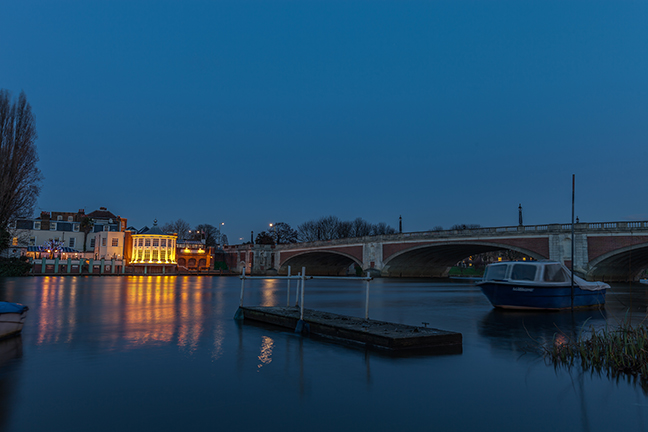 |
Nautical Twilight Nautical Twilight, a window of opportunity that lasts for only 10 minutes and is one of my favourite times of the day. The tone of the blue hue is easily the best across the specrtum but with such a short life span it is vital to be ready. The exposure time has increased now to 5 seconds, and the boat in this shot was swaying to much to get it clean... planning your shot is advised! The lights on the bridge still hadn't turned on which was very disappointing but the lights on the building looked perfect, there is even a few street lights in the far distance that had been on since sunset and this always adds to the shot. With everything getting darker any light is welcomed. |
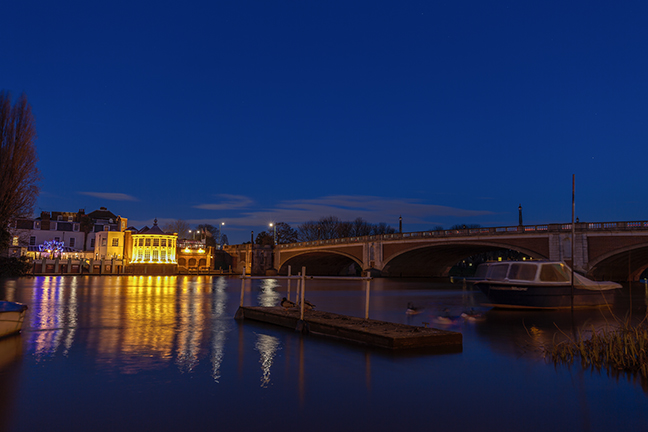 |
Astronomical Twilight Astronomical Twilight lasts for the next 10-30 minutes as the night slowly descends, even an hour later the blue in the skies can still be seen in your photos even though not by the human eye. Now we are onto a 6 second exposure and the boat is looking awful, the patch of grass to the right is swaying in the wind and causing motion blur... on top of that a group of ducks decided to bomb the party and just swim around, unlike other birds, the ducks didn't respond to my best bear impression! To the human eye everything seems a lot darker, well, it is. But digital cameras can pick up an outstanding amount of detail, particularly light... Just look at the reflections in the water compared to the last shot and the light bouncing of the bridge. The emphisis on light at this time of the evening is what will make your shot, without any light there is a good chance your photo will be dark and noisy and without any eye candy to attract the eye. All in all, experiment with the blue hour, embrace it and you will not be disappointed. Plan your shot, visualise what you expect and catch it! Good luck.
Below are a few more examples of just some of my shots during blue hour.
|
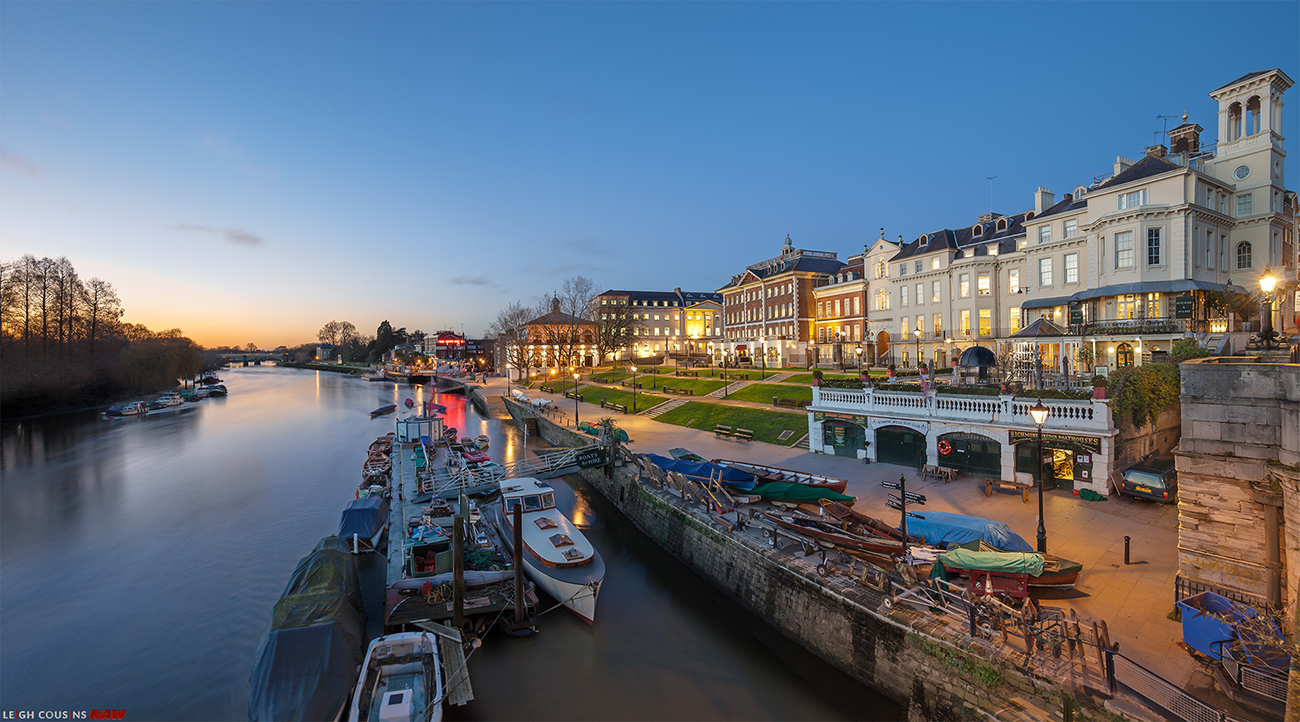 |
|
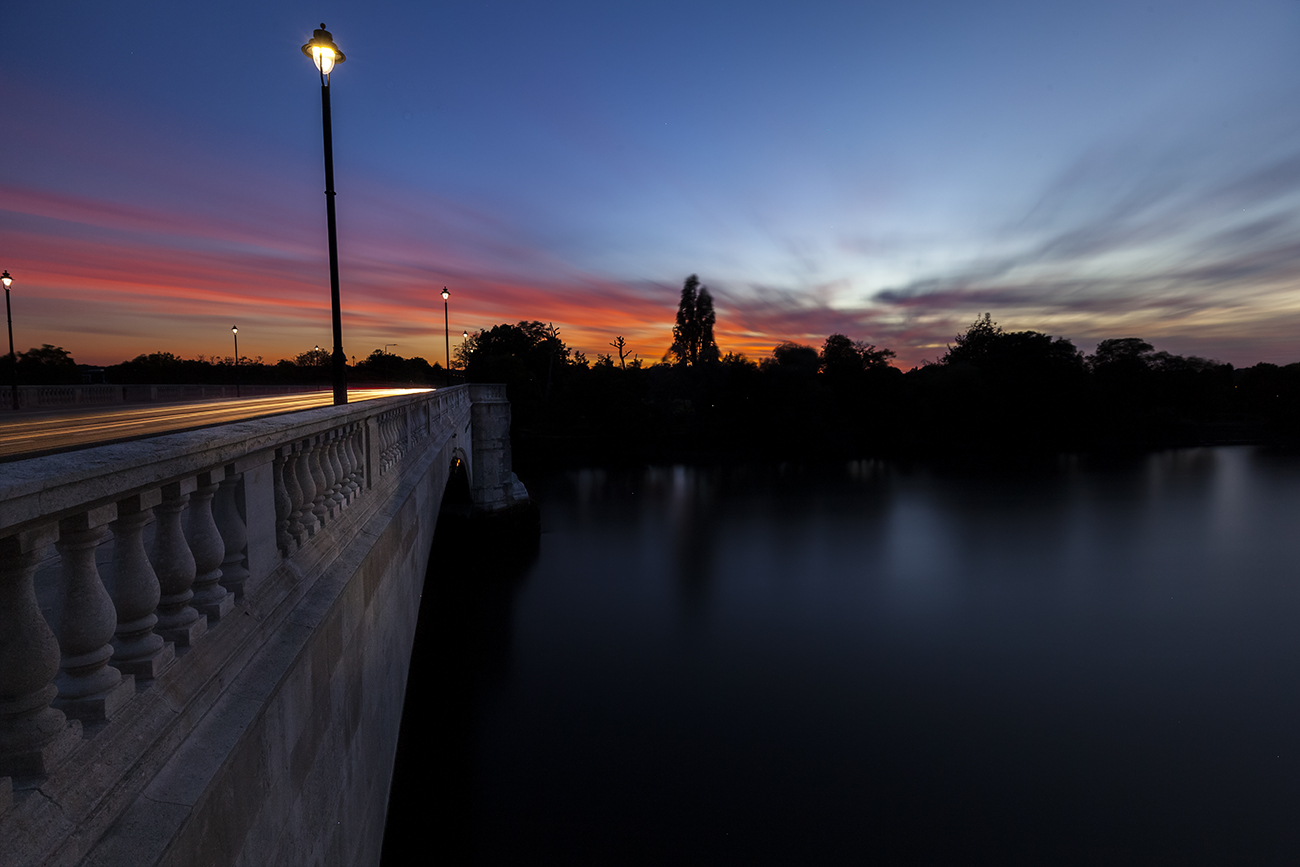 |
|
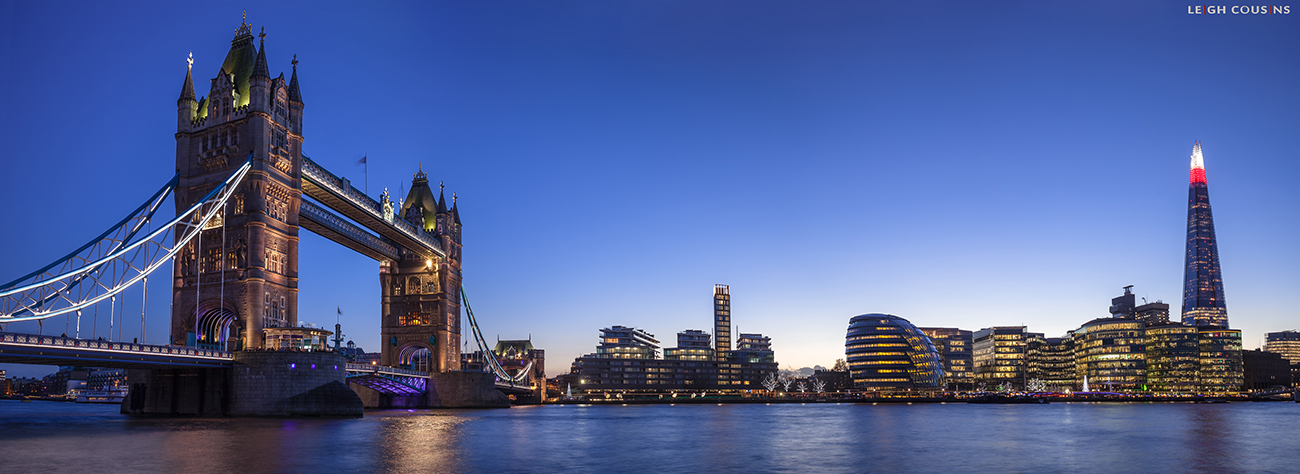 |
|